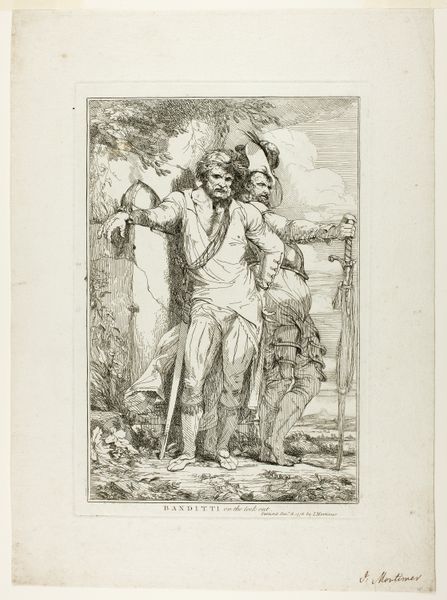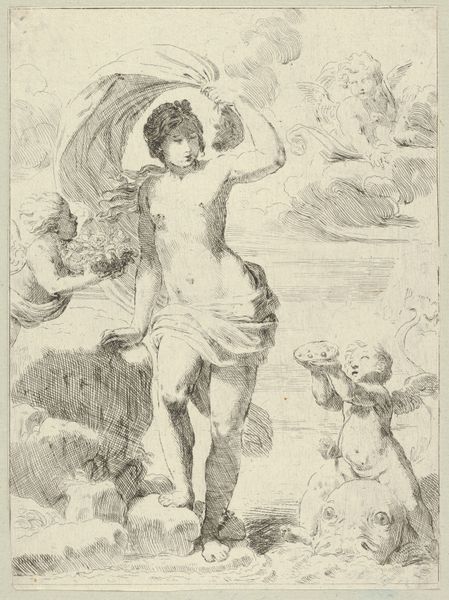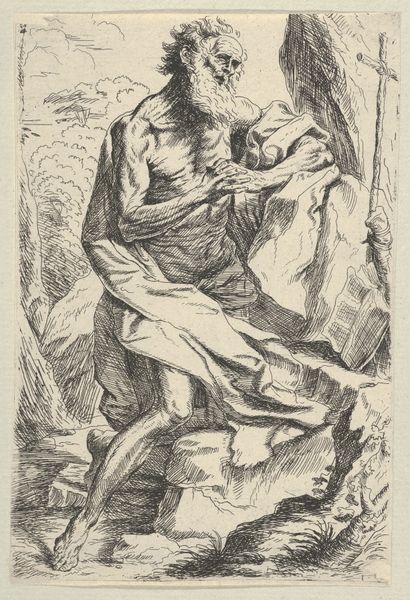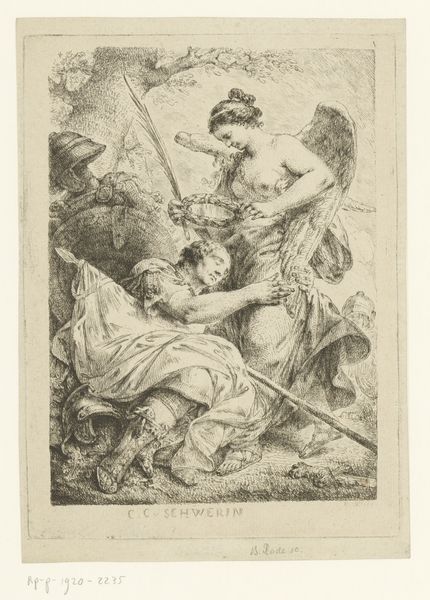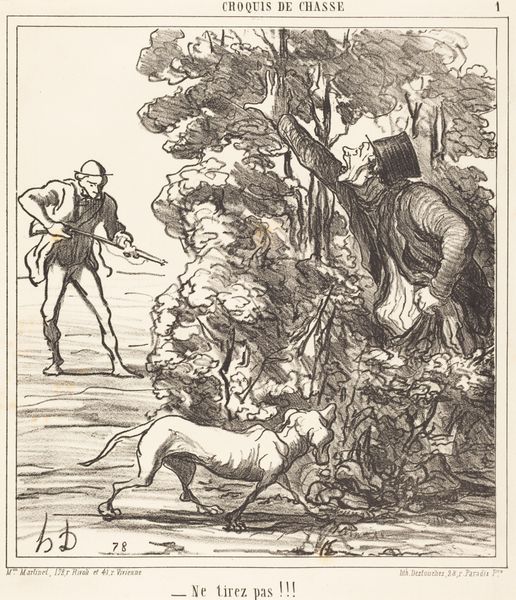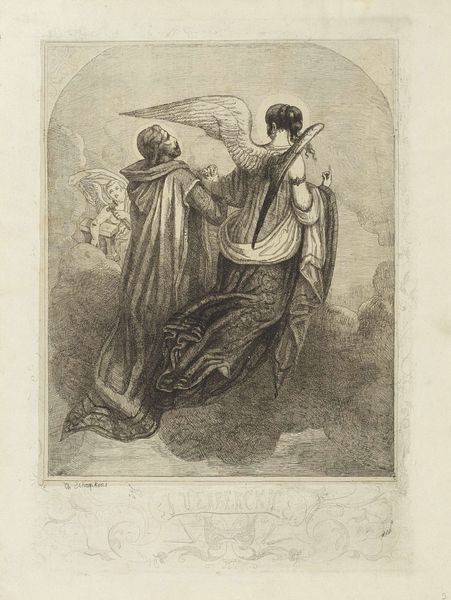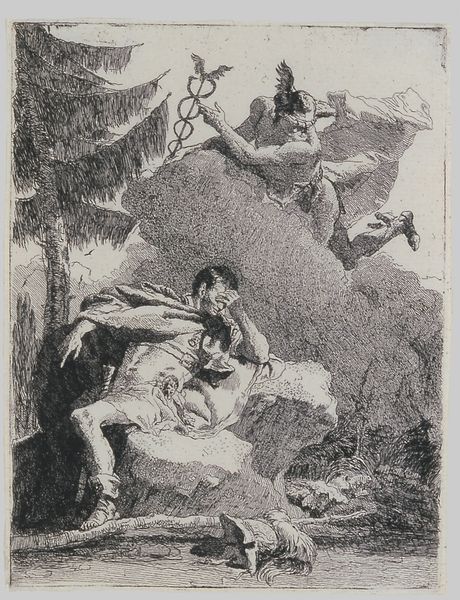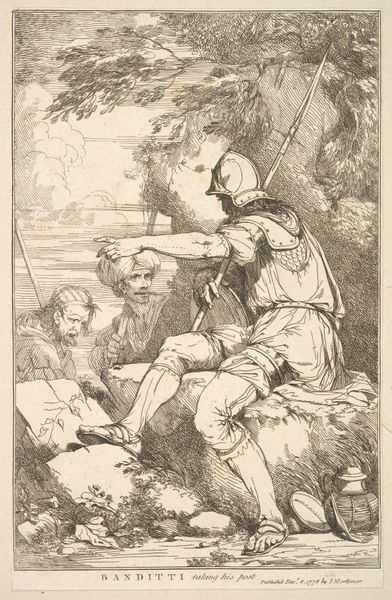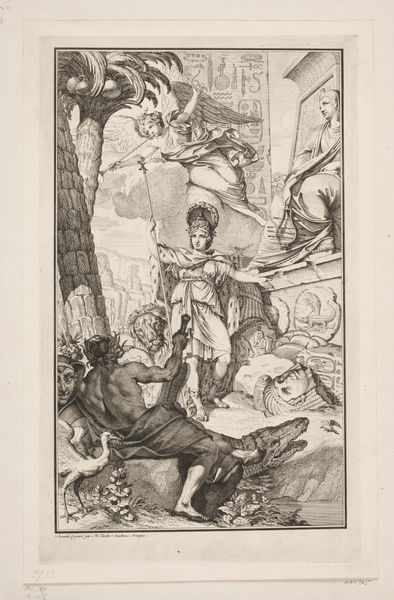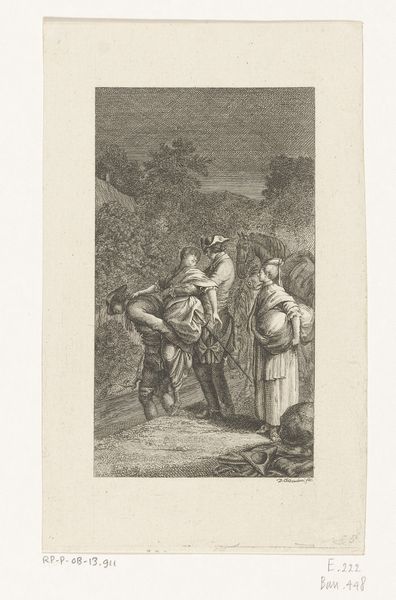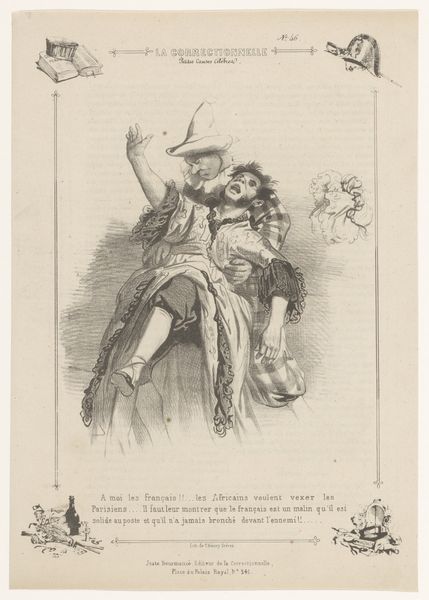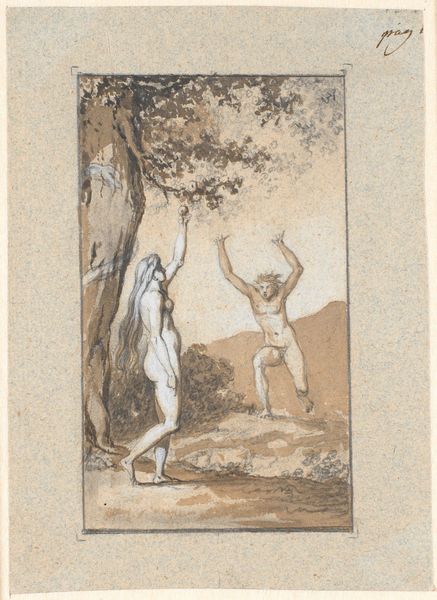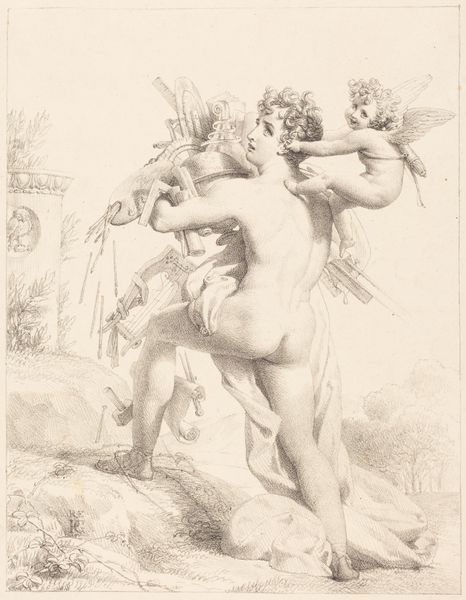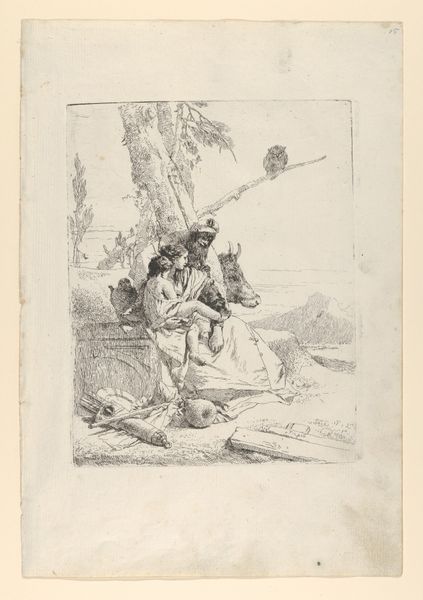
drawing, print, etching, engraving
#
drawing
#
narrative-art
# print
#
etching
#
figuration
#
history-painting
#
engraving
#
sword
Dimensions: Sheet: 9 5/16 x 5 15/16 in. (23.7 x 15.1 cm)
Copyright: Public Domain
Editor: This print, titled "Going Out in the Morning," was created in 1779 by Robert Blyth, using etching and engraving. It depicts two figures who seem to be part of a larger, more menacing group, possibly bandits, heading out with weapons in hand. The mood is quite tense, the lines creating a feeling of urgency and unease. What do you see in this piece from a formal perspective? Curator: From a purely formal reading, the print's success lies in Blyth’s manipulation of line and the creation of texture. Notice how he uses hatching and cross-hatching to build form and create the illusion of three-dimensionality, despite the two-dimensional surface. Look at the varied densities that structure a hierarchy within the work; consider the bright horizon as a visual grounding. The composition is also significant; how the figures are placed in relation to one another and to the space they inhabit—the use of a pyramidal composition lends a classical stability, ironically juxtaposed with the bandit subject matter. The light and shadow create dynamism. Would you agree that such effects highlight inherent artistic talent? Editor: I see what you mean about the masterful linework creating a range of effects, such as form and depth. It is pretty incredible when I step back to see how everything is a matter of dark and light. Are there particular visual devices or forms in this composition to focus on, and how does Blyth effectively utilize them? Curator: Focus on the recurring contrast in line weights. Where does Blyth establish the thicker, darker lines versus where are the thinner lines employed, and what effect does this differentiation produce within the figuration and landscaping? A comparison of texture across the surface can illustrate the technical brilliance and the narrative context suggested here, a rather engaging combination of visual and conceptual elements. Editor: This new way of looking closely, considering contrast and how line weights are intentionally applied is giving me a richer sense of this print. Curator: Yes, seeing through the structure allows one to truly engage with the aesthetic achievement!
Comments
No comments
Be the first to comment and join the conversation on the ultimate creative platform.
